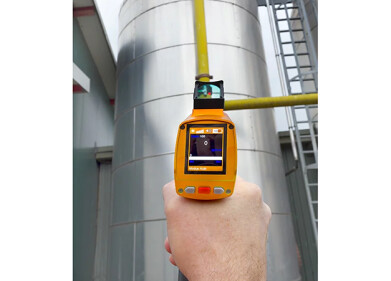Gas Detection
New Ultrasonic Gas Leak Detector Handbook
Mar 28 2011
Process, safety and plant engineers responsible for gas leak detection will find that the new Gassonic Technical Handbook from General Monitors (USA) explains how to incorporate ultrasonic gas leak detectors into plant fire and gas (F&G) detection systems.
This handbook provides engineers with valuable “how to” information useful when integrating ultrasonic gas leak detectors into new oil and gas installations or when retrofitting existing facilities. The handbook presents applications data with respect to specific gases and application locations. It also provides step-by-step guidelines on how to integrate these detectors into safety systems based on plant layouts, detection coverage, voting with other detector types, and other important considerations.
Conventional infrared (IR) point gas detectors have been used in the oil & gas and process industries for decades. Since 1996, however, IR point gas detectors and open path gas detectors have been complemented by acoustic gas leak detectors to ensure better coverage and effectiveness of F&G detection systems.
General Monitors strongly advocates the use of all three sensing technologies when designing F&G systems as part of its human sensory model. The conventional gas detectors represent the “nose,” which smells the gas at a specific point of location and provides a measure of gas concentration. Gas imaging and optical flame detection represent the ”eyes” that see the gas when it comes within the field of view. Finally, the ultrasonic gas leak detection technology represents the ‘“ears” that hear the gas leak as soon as the leak occurs. Utilizing the whole range of sensing technologies enhances detection capabilities and reduces risk because leaks are detected with greater speed and confidence.
Ultrasonic gas leak detectors are used in pressurized gas applications to complement conventional gas detection methods. In outdoor or ventilated locations, conventional detectors can miss gas leaks due to wind conditions, gas dilution, or leak directionality. To compensate for such situations,
ultrasonic gas leak detectors pick up gas leaks by responding to the airborne ultrasound instead of relying on physical contact between the gas and the sensor element. This capability significantly improves total speed of response to dangerous gas leaks.
Gassonic ultrasonic gas leak detectors are based on stainless steel electret condenser microphone technology, which ensures a high degree of reliability. The most advanced detector models feature the Senssonic™ self-test, a patented solid state self-test mechanism to validate operation at all times. The detectors have a detection radius up to 20 meters at a leak rate of 0.1 kg/s. They hold relevant Ex and FM approvals and they are SIL 2 suitable.
When it comes to new installations or F&G system modifications, it is important to consider the benefits and drawbacks of the various detection technologies. In areas where different methods are suitable it is considered best practice to apply more layers of protection. For example, in an existing facility where there is pressurized gas and only conventional detectors are installed, ultrasonic gas leak detectors should also be considered to increase response time and take into account the fact that the conventional detector may fail due to wind conditions, gas dilution, and leak direction.
Digital Edition
AET 28.2 April/May 2024
May 2024
Business News - Teledyne Marine expands with the acquisition of Valeport - Signal partners with gas analysis experts in Korea Air Monitoring - Continuous Fine Particulate Emission Monitor...
View all digital editions
Events
Jul 10 2024 Birmingham, UK
Jul 21 2024 Cape Town, South Africa
Australasian Waste & Recycling Expo
Jul 24 2024 Sydney, Australia
Jul 30 2024 Jakarta, Indonesia
China Energy Summit & Exhibition
Jul 31 2024 Beijing, China


















